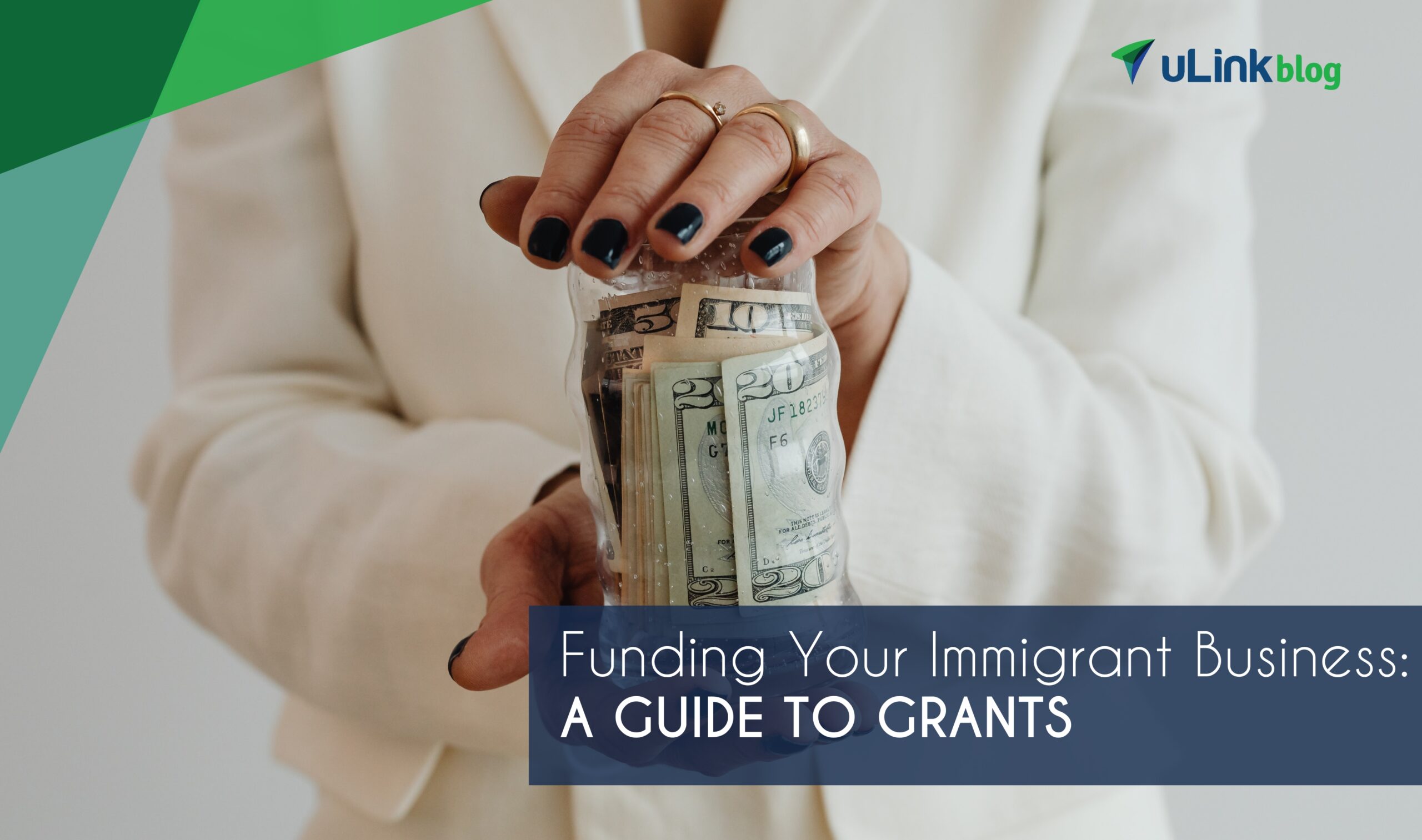
As a small business owner, you have a lot of responsibility.
For starters, you need to ensure that your products or services are compelling. You also have to promote the operational efficiency of your firm.
More than anything, however, you have to consistently secure sufficient funding—whether through recurring revenue or outside resources.
While securing traditional financing can be difficult (especially in the current economic environment), there are other options. Small business grants provide business owners an alternative path to securing capital.
In this article, we’ll discuss why grants are worth considering, where you can find them, and how you can successfully apply.
Understanding Small Business Grants
While most financial tools are complex to understand, grants are pretty straightforward.
So, what is a small business grant? In short, a grant is free money provided to a business.
Every year, billions of grant dollars are made available to for-profit and nonprofit companies alike.
Who provides these grants?
In most cases, they are offered by the federal government, state governments, philanthropic organizations, academic institutions, individual investors, and privately-owned companies.
How are small business grants different from loans?
Unlike loans, grants have no up-front cost, do not incur interest, and never have to be repaid.
That’s why grants are so powerful—and hard to get.
The Pros and Cons of Small Business Grants
The benefits of a business grant are undeniable.
They offer a free financial gift with a targeted use: to help your company reach its full potential.
That may include expanding to a larger location, investing in marketing resources, increasing your staff, purchasing new equipment, or even acquiring a competitor.
Grants unlock business growth.
Beyond the monetary support, grants also double as an official endorsement of your business.
After all, they’re provided by a person or institution that truly believes in you, your business, and your overarching mission. They had countless other firms to consider, but they chose yours.
At the same time, that’s one of the potential drawbacks of small business grants: they’re intensely competitive.
Thousands of businesses across the United States compete for a limited amount of grants.
And while it’s difficult to win a particular grant, it can be equally difficult to find one that fits your company’s unique profile.
Most grants have rigorously specific application requirements—such as being a nonprofit organization with under ten employees or a veteran-owned business in an urban area.
Grant applications can also take a lot of time to complete. In most cases, they demand considerable up-front paperwork and detailed financial information about your company.
Despite the competition and intense application process, however, small business grants remain well worth your attention.
Available Grants for Immigrant Entrepreneurs
Curious to see what grants are available for immigrants?
To jumpstart your journey, we’ve put together a comprehensive list of business grants according to who offers them: federal, state, and private grants.
Federal Small Business Grants
Government agencies provide billions of grant dollars to businesses every year.
While some federal distributors cast a wide net, other agencies are more specific.
1. Grants.gov
With over 1,000 federal grant programs, Grants.gov provides interested entrepreneurs with an ideal funding launchpad.
Though the database may look daunting at first, the rewards can be worth the research. After all, agencies centralized on Grants.gov award over $500 billion annually.
Click here to view the most recent grants available—be sure to check “Small Businesses” in the eligibility box on the left side of the page.
Incorporate these recommendations to refine your federal grant application and make it stand out.
2. Small Business Innovation Research Program (SBIR) and Small Business Technology Transfer Program (STTR)
If your business specializes in research and development, the SBIR and STTR programs are worth a look.
Overseen by the U.S. Small Business Administration, the SBIR and STTR offer powerful support to for-profit businesses with under 500 employees (including affiliates).
In their own words, the SBIR and STTR “enable small businesses to explore their technological potential and provide the incentive to profit from its commercialization.”
Federal agencies participating in these programs include the Department of Agriculture, the Department of Defense, the Department of Commerce, and many others.
Funding is lucrative. In the first phase of financing, awards range between $50,000 and $250,000 for a year, while the second phase averages closer to $750,000.
If you’re interested in learning more:
- Confirm eligibility here.
- Complete company registration here.
- View the most recent funding opportunities here.
Keep in mind that SBIR and STTR applications are quite rigorous, so only proceed if you are confident in your eligibility.
Note: as mentioned above, the STTR/SBIR programs collaborate with several government agencies, including the U.S. Department of Energy (DOE) and the National Institutes of Health (NIH).
If the DOE overlaps with your business, view the DOE specific page for grant programs.
If the NIH overlaps with your business, view the NIH dedicated page for grants.
3. USDA Rural Business Development Grants
This grant program is tailored specifically to small businesses in farming communities.
Provided by the U.S. Department of Agriculture, USDA grants span three categories: competitive grants, capacity grants, and non-competitive grants.
While eligibility requirements depend on your application category, USDA grants are for a broad array of uses, and amounts requested can be as high as $25 million.
Click here to view the most recent funding opportunities.
4. Program for Investors in Microentrepreneurs (PRIME)
Offered by the Small Business Administration, PRIME grants are available for underserved business professionals.
As such, PRIME grants help low-income entrepreneurs gain the training and capital they need to launch and grow their businesses. This includes private nonprofits and businesses run by state, local, or tribal governments.
PRIME grants are made available once a year and range from $75,000 to $250,000. According to the SBA, the next application phase will be posted on grants.gov in April 2024.
You can view the full list of 2022 grantees here.
State Small Business Grants
While federal grants are quite competitive, state grants can be more accessible.
Unfortunately, some business grant resources will require you to incur a small cost.
For example, the State Business Incentives Database can help you identify grants in your local state, but they charge an annual fee to access the details. While membership could be helpful, it’s up to you to decide whether the cost is worth the information.
Other tools, like the Small Business Development Centers (SBDCs), provide helpful business mentorship and coaching. While SBDC resources can lead to funding opportunities, they don’t catalog grants for you to view online.
That’s why the following three business grant resources are especially useful.
2. Economic Development Administration (EDA)
As part of the U.S. Department of Commerce, the EDA collaborates with communities to offer grants that inspire innovation, entrepreneurship, and employment opportunities.
The EDA is a great tool to find funding, recruit local talent, and even secure office space nearby.
To view EDA programs and funding opportunities in your local area, click here.
To find an EDA regional office near you, click here.
3. Minority Business Development Agency Centers (MBDA)
As a national network of business centers, the MBDA specializes in advancing minority entrepreneurs.
In addition to helping acquire debt-based financing, your local MBDA center can help you find and apply for state and local business grants.
Click here to view the MBDA grant application webpage.
4. The State Trade Expansion Program (STEP)
While associated with the Small Business Administration, the STEP helps small businesses expand into foreign markets.
To date, over $200 million has been awarded to help small businesses export domestic products, design international marketing products, participate in foreign trade missions, and more.
While eligibility varies for each grant, funding opportunities are immense. For example, last year, one entrepreneur was awarded $1,400,000.
While applications for the STEP have closed for the year, they generally reopen towards the beginning of the year. You can view last year’s awardees here.
Note: looking for more state resources? Consider searching Google with the following keywords: “small business grants [state name].”
For example, searching “small business grants Illinois” yields a number of helpful grant resources, including grants of up to $25,000.
You can even make the search specific for the industry your business is in.
Private Small Business Grants
In addition to federal and state grants, many private companies offer funding to entrepreneurs.
As you’ll see, some are large corporations, while others are boutique firms.
1. FedEx Small Business Grant Contest
This contest awards money to businesses. In previous editions of the contest, FedEx has awarded grants ranging from $5,000 to $50,000 to small businesses. The number of grant recipients also varied, with some years having multiple winners receiving different amounts, while other years might have a single grand prize winner. All you have to do is register, wait for the next competition to begin, and then submit an application.
To be eligible, your small business must be for-profit, have a FedEx business shipping account number, and employ fewer than 99 employees.
Click here to learn more.
2. Verizon Small Business Digital Ready Grant Program
This program offers grants to entrepreneurs. However, the specific dollar amount of the grant and the total amount of grants awarded annually vary from year to year.
In the past, the program has offered grants ranging from $5,000 to $10,000 to eligible small businesses. The total amount awarded in grants each year exceed $1 million.
To be eligible, applicants must register through the Verizon website and complete educational resources (or virtual events).
Click here to learn more.
3. National Association of the Self-Employed (NASE)
The NASE awards four of its members a quarterly grant of up to $4,000.
To be eligible, all you have to do is join NASE and submit an application.
Click here to get started.
4. Second Service Foundation
This nonprofit organization is dedicated to helping U.S. veterans start (or grow) their small business.
As part of the Military Entrepreneur Challenge (MEC), applicants can win up to $15,000 (plus $50,000 in free legal services).
To apply, you must be a veteran, reserve, or active duty member in any branch of the U.S. Armed Forces. You must also be at least a 51% owner of a business.
To apply for the MEC, click here.
5. Patagonia Corporate Grant Program
This program gives up to $20,000 to nonprofit organizations dedicated to preserving the environment.
While eligibility requirements are somewhat broad, you can view the details here.
The next round of Patagonia grant proposals will be accepted until April 30, 2024.
6. Amber Grant
This grant awards $10,000 in grant money to a woman-owned business (or startup) every month.
At the end of the year, one of the twelve monthly winners receives an additional $25,000 in funding.
Though the application requires a $15 fee, it is quite short and can be accessed here.
We hope these business grant resources are helpful to you and your small business.
While it’s easy to get overwhelmed by these myriad opportunities, remember how much grant money is provided each year—billions of dollars are given away for free.
Stay patient and be persistent.
And make sure your application is as compelling as possible.
Tips for a Successful Grant Application
As we’ve discussed, small business grant applications are competitive and time-consuming.
In order to stand out, here are three tips to get your application ready.
1. Be Creative
Everyone likes a good story. Remember that when you write your grant application.
After all, your application is an advertisement for your company. Every word you write, and every image you convey, is in service of your small business.
Your goal shouldn’t be simply to get funding—think in broader terms.
Your goal is to convince the reader that your business has value, and that it has a bright future.
If you can win over the reader, you just might win the grant itself.
2. Be Specific
Tailor your application to each grant, and its provider.
While it’s tempting to copy and paste for each grant, don’t do it. Most of your competition will try that strategy, and it simply won’t work.
Instead, be specific in two key ways.
First, be very clear about the reasons you need additional funding. Show how the hypothetical grant money would help take your business to the next level.
Secondly, be clear about why you’re applying for the grant in question. As we’ve seen, there are many grants on the market. Make the provider feel special—and as sentimental as it may sound, make them feel seen.
Avoid generalizations, and emphasize why your business is the perfect fit for their funding.
3. Be Direct
It’s easy to overwrite grant applications and use flowery language.
Instead, keep things short and to the point. Stick to the facts, make your case, and then move on.
The rest is up to the decision makers. If you put in a good application, feel confident that free money might just come your way.
Moving Forward
While financing a business isn’t easy, small business grants can help in a big way.
After all, they provide access to free money with no strings attached.
Remember, if grants prove difficult to grasp, there are other financial tools at your disposal, including a business line of credit, a merchant cash advance, and a small business credit card.
In the meantime, stay tuned for more financial tips and tools from our small business library.
At uLink, your financial freedom is our highest priority.
That’s why we provide great exchange rates and fees starting as low as $0: so you can send more money home than ever before.
Miles from home—just moments away with uLink.









